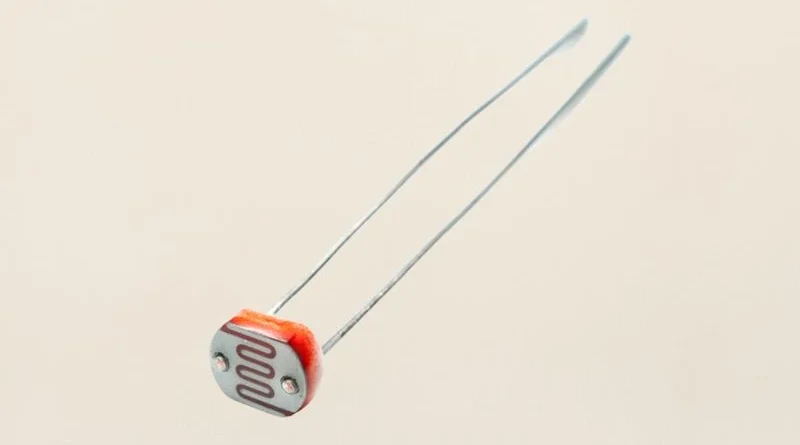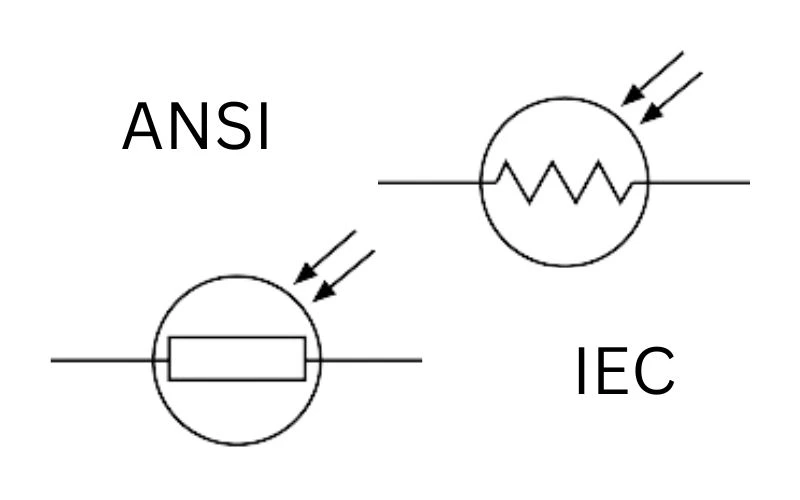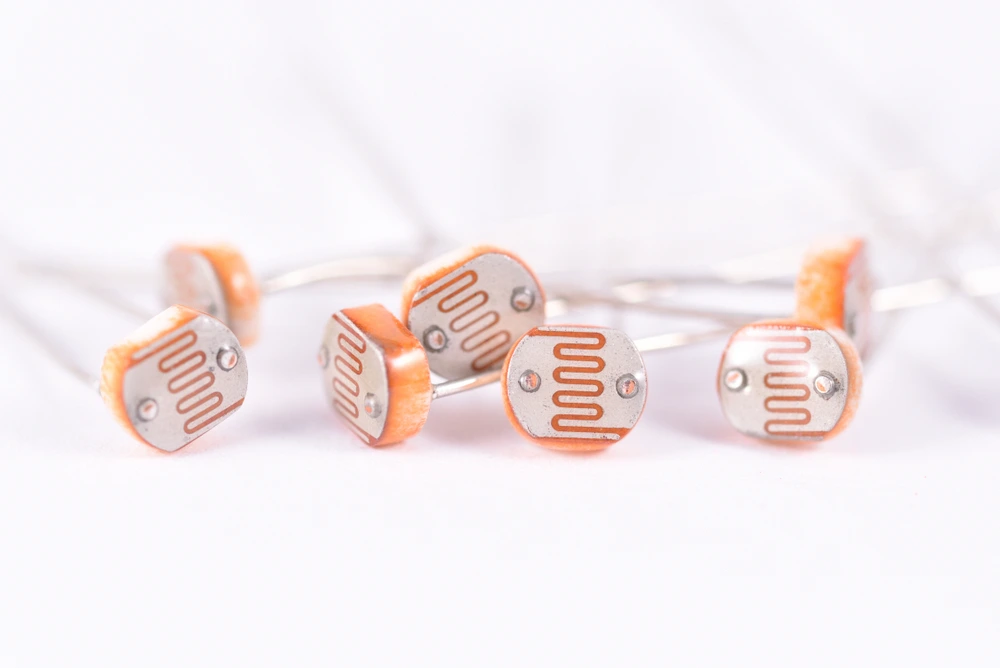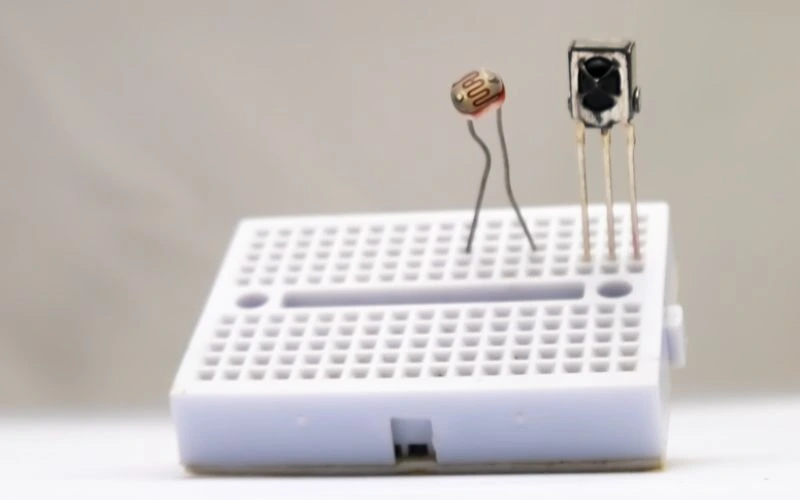
Light-dependent resistors (LDRs) play a central role in diverse electronic component applications. Also known as photoresistors, these devices have unique properties that make them essential for capturing and controlling light. This article delves into the intricacies of LDRs and examines their functionality, applications, construction, circuit integration, specifications, types, intrinsic and extrinsic photoresistors, advantages, and testing methods.
What is an LDR?
A light dependent resistor (LDR) is a type of resistor whose resistance varies with the intensity of incident light. This light-sensitive device belongs to the family of photoresistors that respond to changes in ambient light levels.
How long-distance relationships work
LDRs work on the principle of photoconduction, where their resistance decreases as the amount of light falling on them increases. This change in resistance is due to the generation and movement of charge carriers in the LDR semiconductor material.
Photoconductivity mechanism
- Incident light energy: When photons of light strike the surface of the LDR, they release energy into the semiconductor material.
- Generation of electron-hole pairs: The absorbed energy promotes electrons to a higher energy level and creates electron-hole pairs.
- Increased conductivity: Increased electron mobility reduces resistance, allowing current to flow more easily through the LDR.
LDR symbol

Before we delve into the manufacturing process, we need to understand the symbols used to represent LDRs in electronic schematics. The symbol usually consists of a circle with two arrows pointing inward, symbolizing varying resistance based on lighting conditions.
How are long-distance relationships created?
The manufacture of LDRs involves special processes to ensure their sensitivity to light. Semiconductor materials such as cadmium sulfide (CdS) or cadmium selenide (CdSe) are often used. These materials are carefully processed to create a light-sensitive component with controlled conductivity.
- CDS LDRs: Cadmium sulfide LDRs are commonly used and exhibit sensitivity to a broad spectrum of light.
- CdSe LDRs: Cadmium selenide LDRs offer specific spectral response properties and are therefore suitable for applications requiring color differentiation.
Light Dependent Resistance Circuit
Integrating LDRs into electronic circuits requires a comprehensive understanding of their properties. A simple LDR circuit connects the device in series or parallel with other components to achieve the desired light-dependent functionality. Proper circuit design ensures optimal performance in applications such as automatic street lighting or camera exposure control.
Circuit design considerations
- Voltage Divider Configuration: Using LDRs in a voltage divider circuit allows for precise control of output voltage based on resistance fluctuation.
- Interfacing with microcontrollers: LDRs can be connected to microcontrollers to enable advanced light-dependent functions in electronic systems.
Light Dependent Resistor Specifications
Understanding the specifications of LDRs is critical to selecting the right component for a specific application. Key specifications include resistance range, spectral response, and response time. These specifications determine the suitability of the LDR for tasks ranging from security systems to camera exposure control.
Important Specifications
- Resistance range: Common values range from a few hundred ohms in bright light to several megaohms in the dark.
- Spectral response: LDRs have different sensitivity for different wavelengths, and selecting the appropriate spectral response is critical for accurate performance.
- Response time: Consider response time when selecting an LDR for time-critical applications.
Types of LDR

Different types of LDRs meet different application needs.
Intrinsic photoresistance
Intrinsic photoresistors are made from semiconductor materials and their conductivity changes depending on light intensity. They are versatile and find application in a variety of electronic devices, from cameras to light-sensitive switches.
Extrinsic photoresistor
Extrinsic photoresistors add impurities to the semiconductor material to change its photoconductive properties. This change allows sensitivity and spectral response to be adjusted to meet specific application requirements.
LDR applications
LDRs are used in countless applications because of their sensitivity to light. The ability to control electrical devices depending on ambient light conditions makes them versatile in many areas.
Automatic public lighting systems
In urban environments, LDRs are used in automatic public lighting systems. As daylight decreases, the resistance of the LDR decreases and triggers the street lights to activate.
Camera exposure control
Photographic devices use LDRs for exposure control. Adjustments to the camera's aperture and shutter speed are made based on lighting conditions detected by the LDR.
Security systems
LDRs are integrated into security systems to detect intruders. Sudden changes in ambient light trigger an alarm, alerting security personnel to potential threats.
Advantages of using LDRs
LDRs offer several advantages that contribute to their widespread use in electronic circuits.
- Cost-effective: LDRs are cost-effective and readily available, making them economical for light detection applications.
- Energy Efficient: These devices consume minimal power and are therefore suitable for battery-powered systems.
- Easy integration: LDRs can be easily integrated into electronic circuits and offer a simple solution for light-dependent applications.
Disadvantages of LDR
Although LDRs offer numerous advantages, it is important to be aware of their limitations to make informed design decisions.
Disadvantages
- Restricted spectral range: LDRs may have limitations in detecting certain colors because their spectral response may vary.
- Temperature sensitivity: The resistance of LDRs can be affected by temperature fluctuations, requiring compensation in certain applications.
- Durability concerns: The long-term durability of LDRs can be affected by adverse environmental conditions.
How do you test LDRs?

Testing LDRs ensures their functionality and reliability in electronic circuits. Basic testing methods include measuring resistance under different lighting conditions and evaluating response time.
Test Methods
- Resistance measurement: Use a multimeter to measure the resistance of the LDR in both darkness and light.
- Reaction time assessment: Shine a light source on the LDR and observe the time it takes for the resistance to change. Rapid changes are crucial for time-critical applications.
Conclusion
Light-dependent resistors have become indispensable in numerous electronic applications, providing a reliable and cost-effective solution for light detection and control. Understanding their operating principles, applications, construction, circuit integration, specifications, types, intrinsic and extrinsic photoresistors, advantages, disadvantages, and testing methods allows designers and engineers to make informed decisions when integrating LDRs into their designs. As technology advances, LDRs will likely maintain their relevance as essential components in the evolving landscape of electronic devices.
Common questions
What is the typical resistance range of LDRs?
The resistance of LDRs can vary greatly, but common values range from a few hundred ohms in bright light to several megaohms in the dark.
Can LDRs detect different colors of light?
LDRs generally respond to a broad spectrum of light, but their response can vary at different wavelengths. For applications that require specific color detection, spectral response characteristics must be considered.
How can I improve the accuracy of LDR-based systems?
To improve accuracy, calibrate the LDR system based on the specific environmental conditions in which it will be used. This calibration ensures accurate responses to changes in light intensity.

